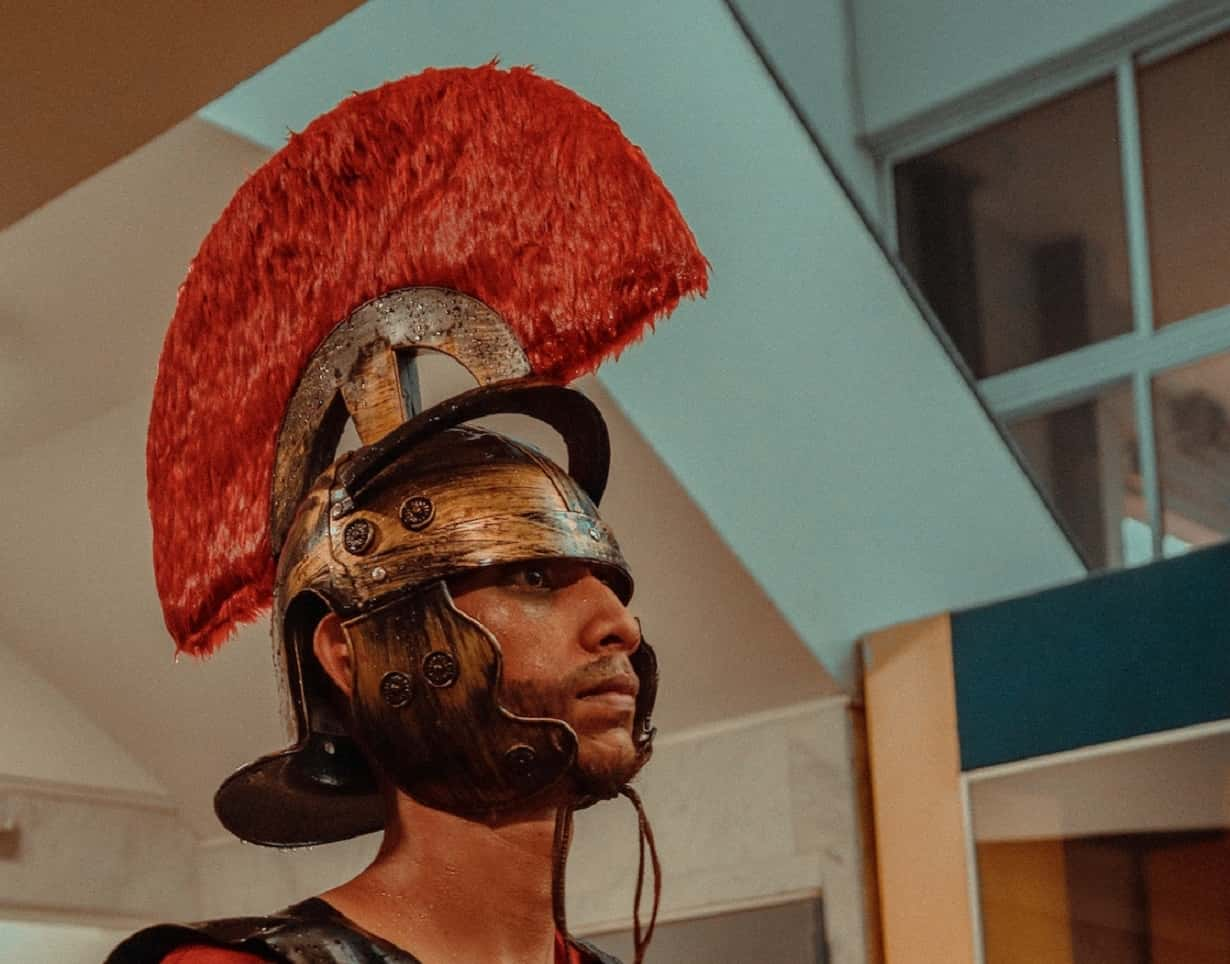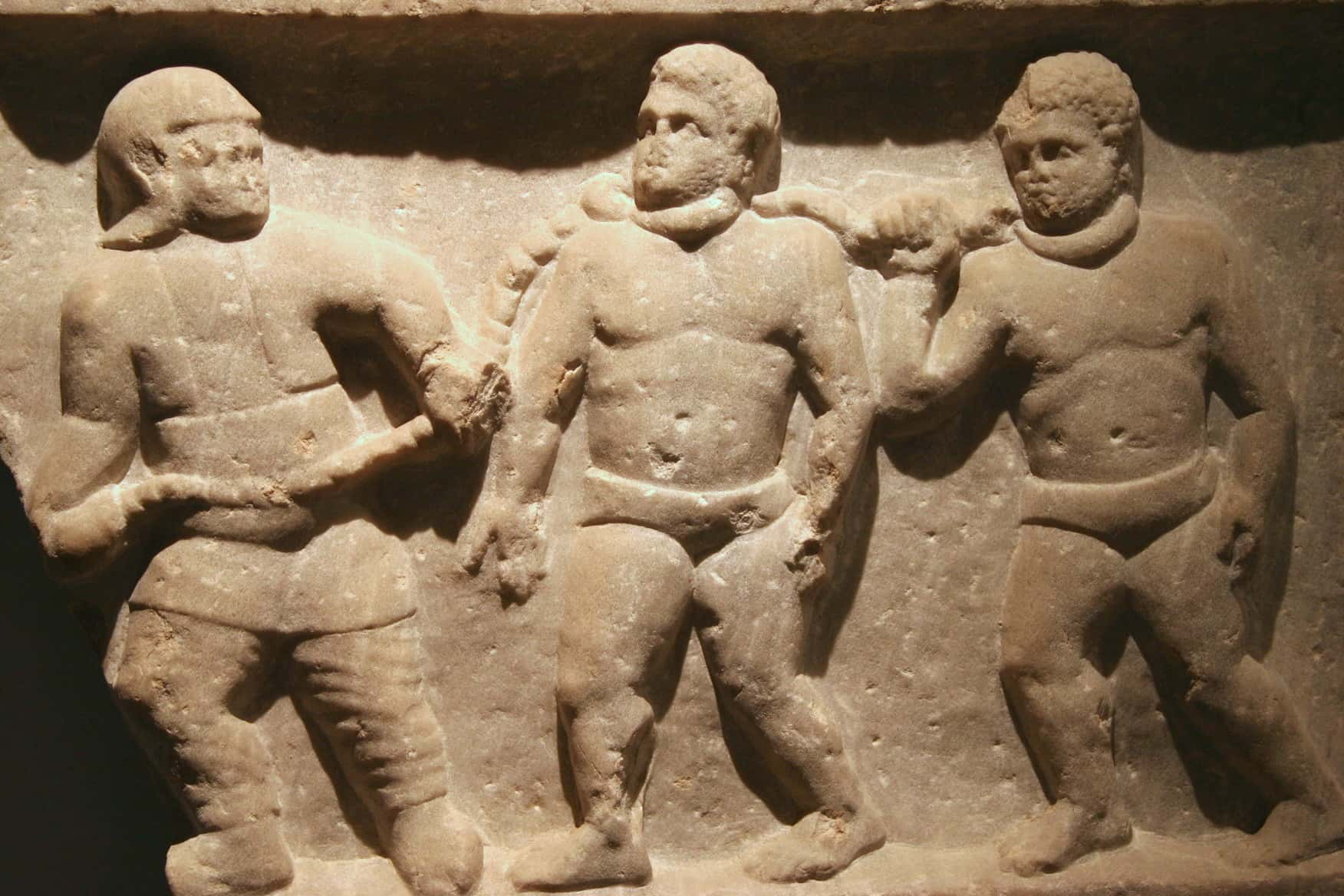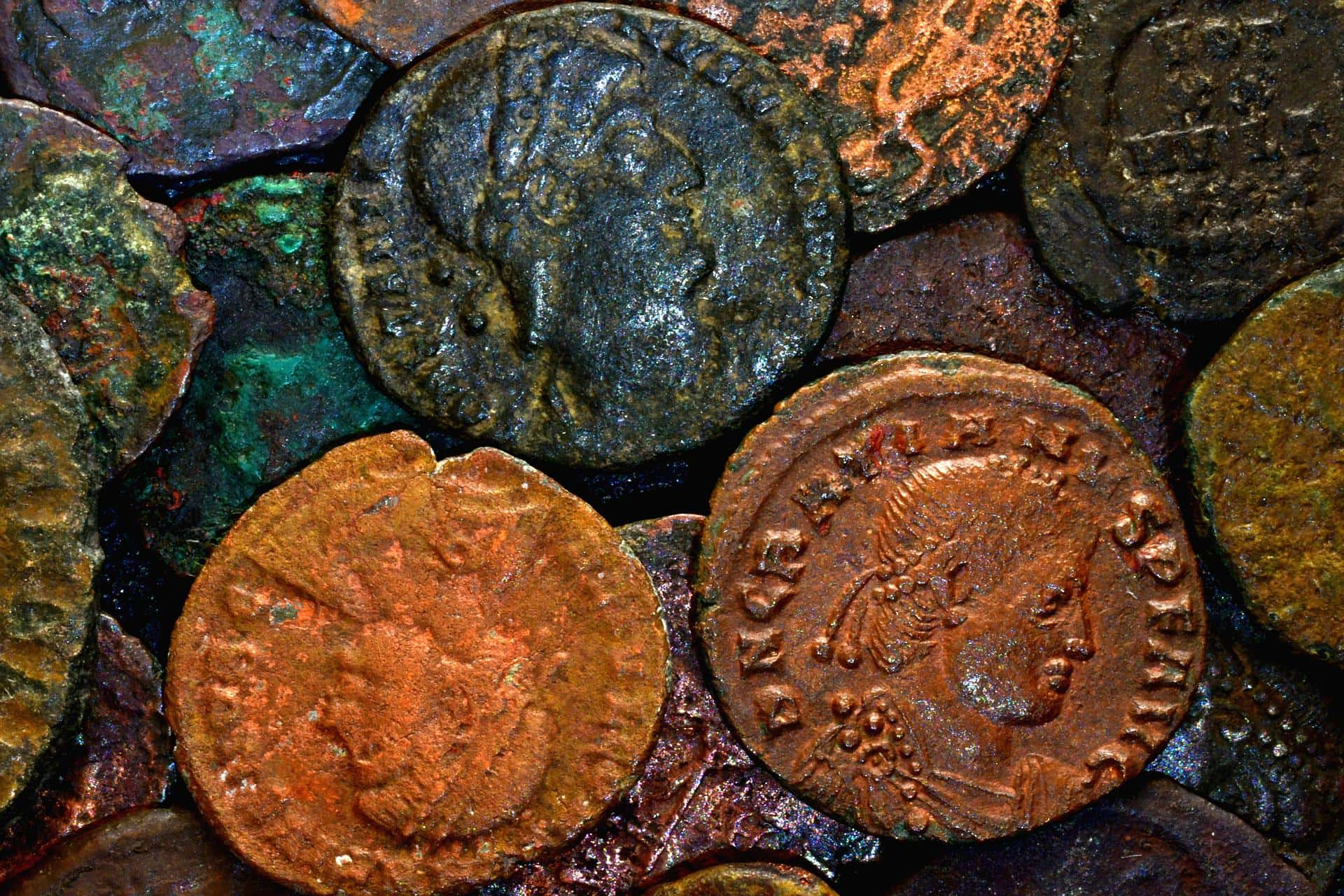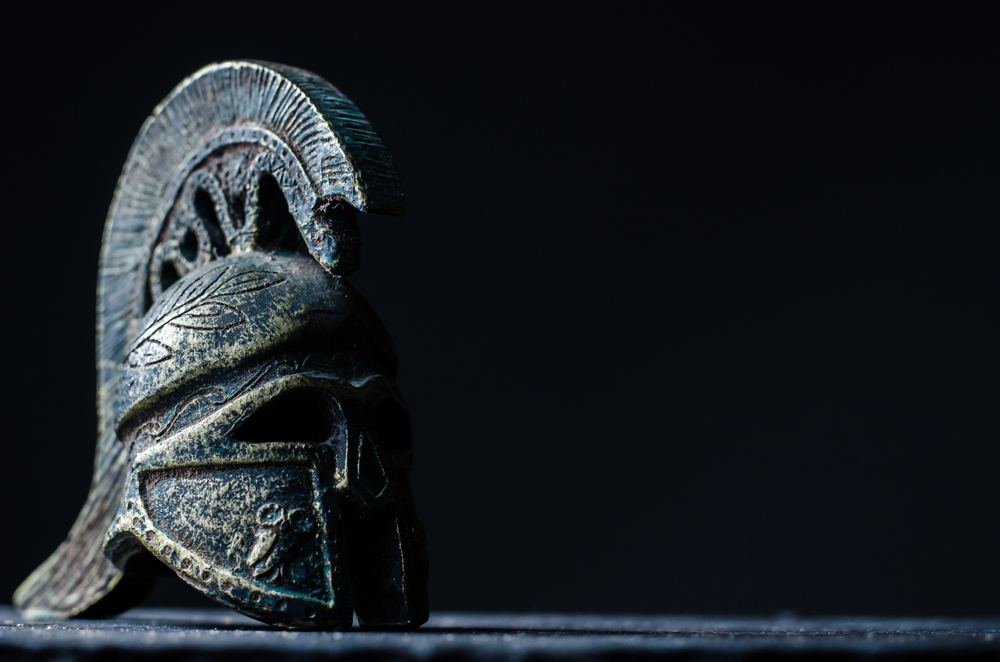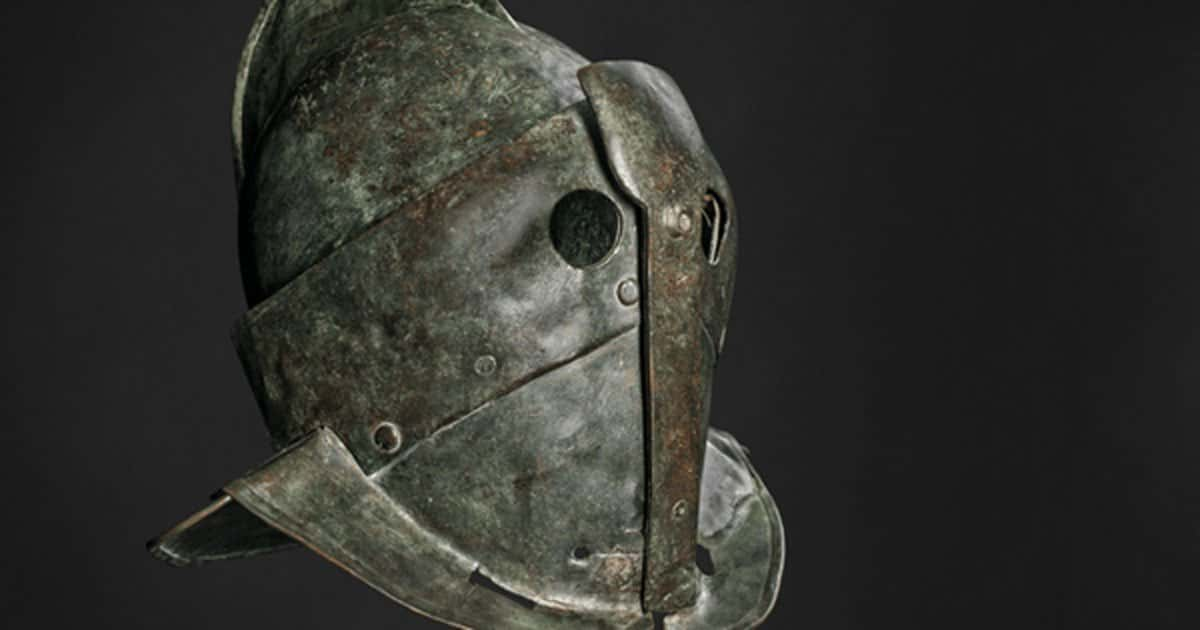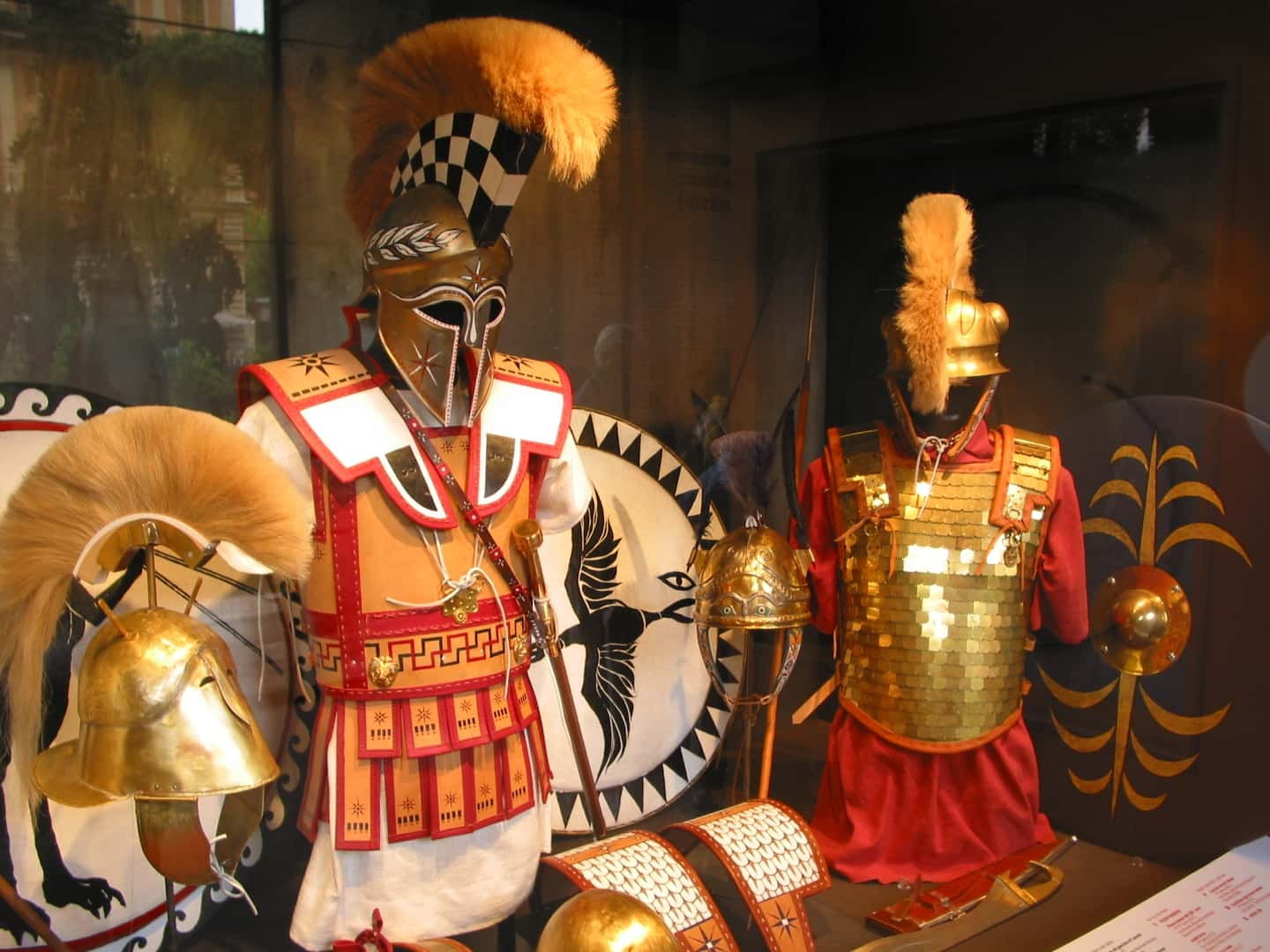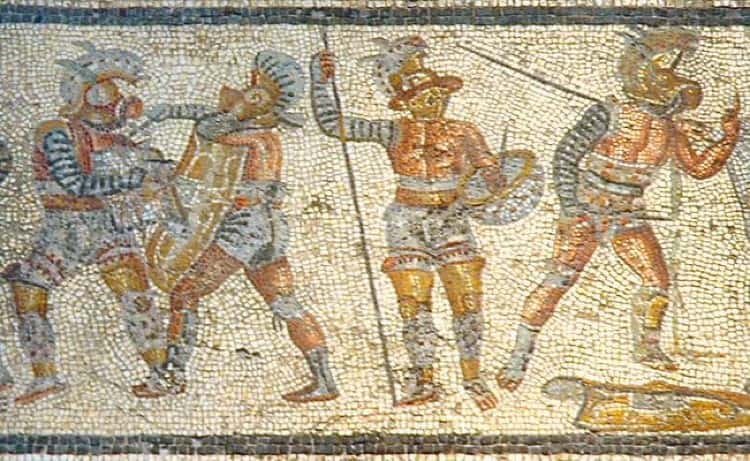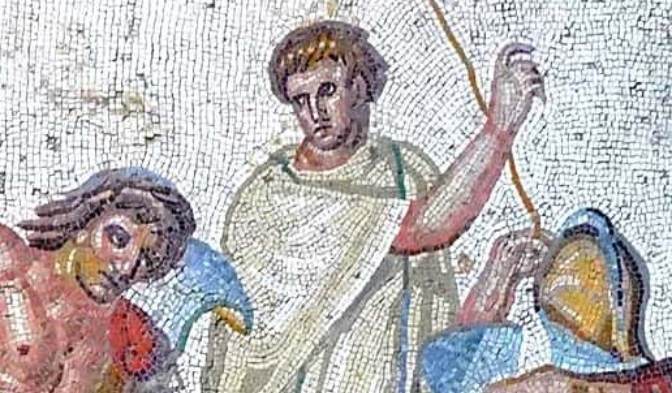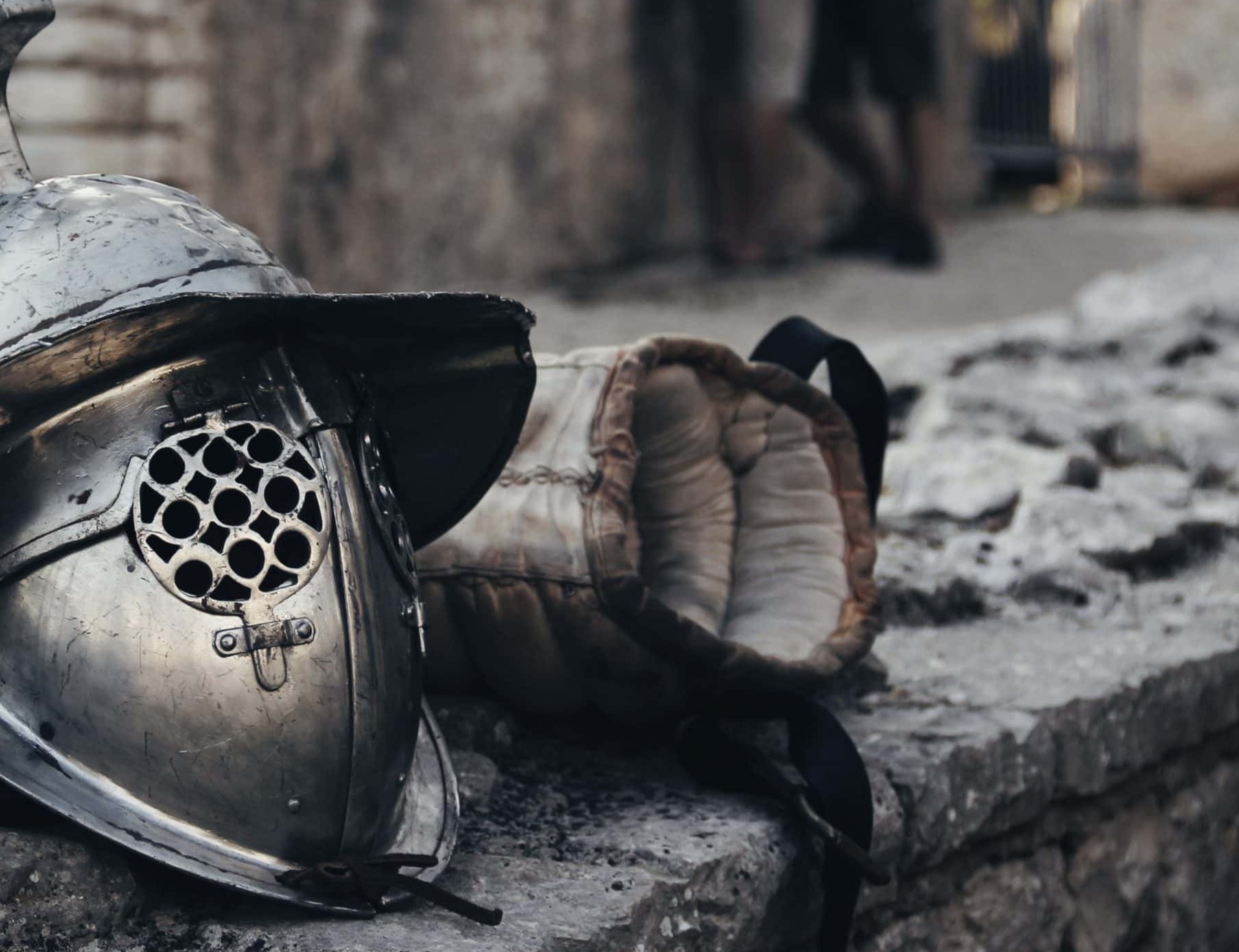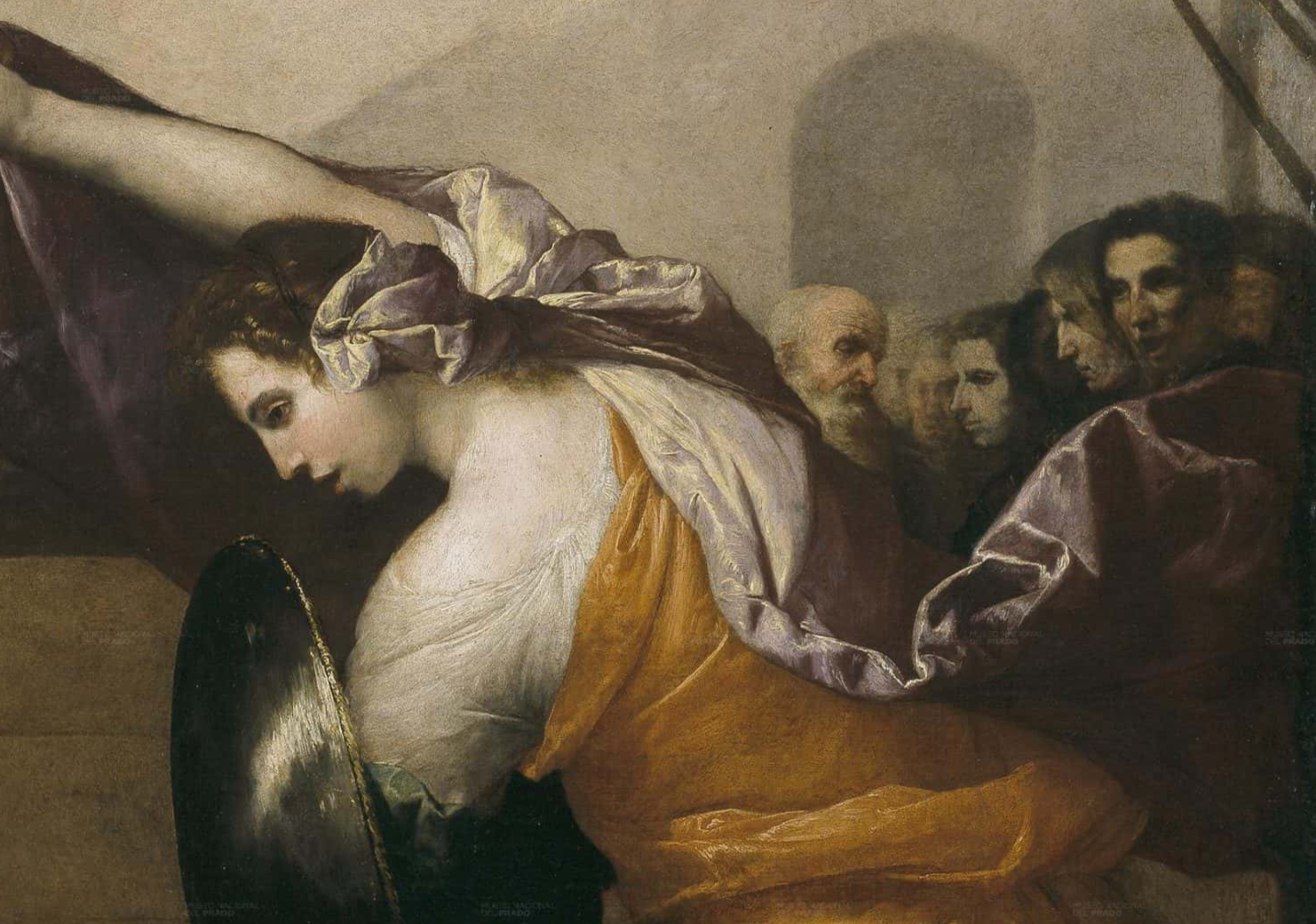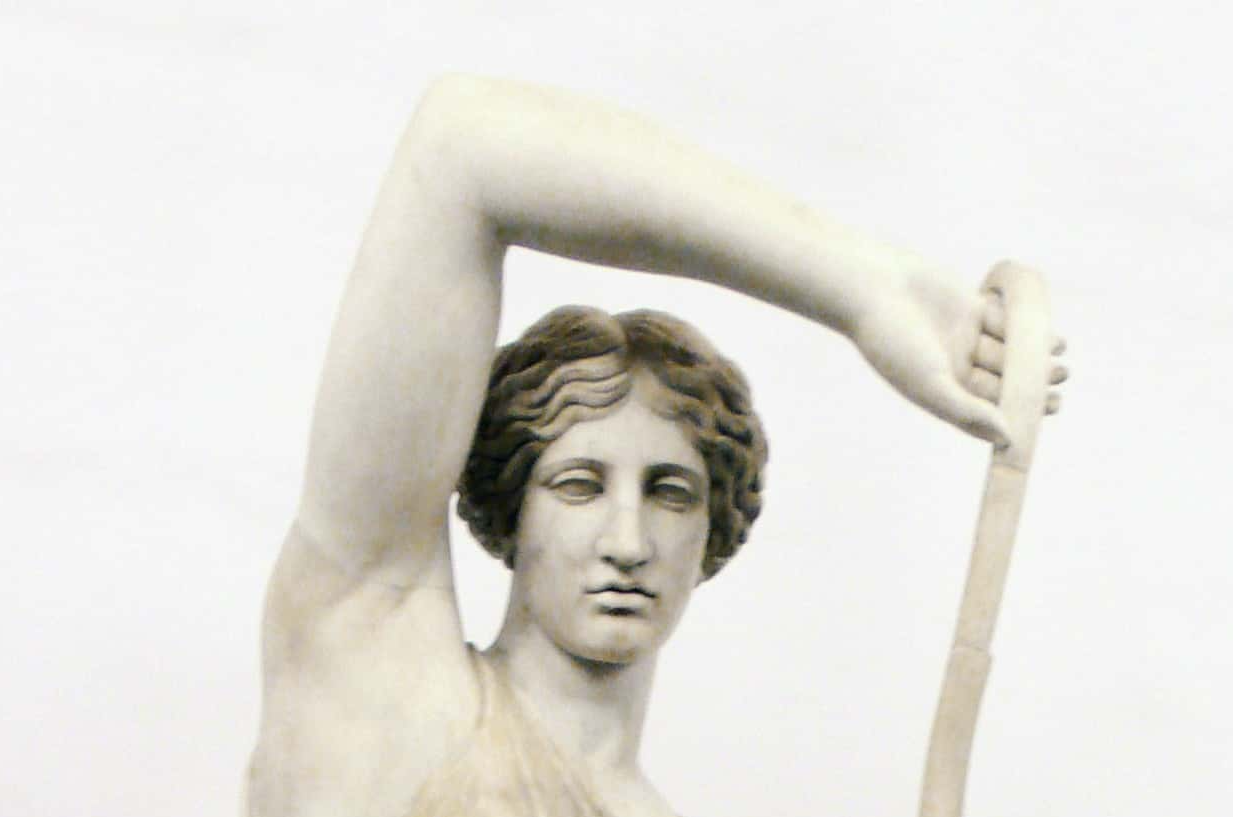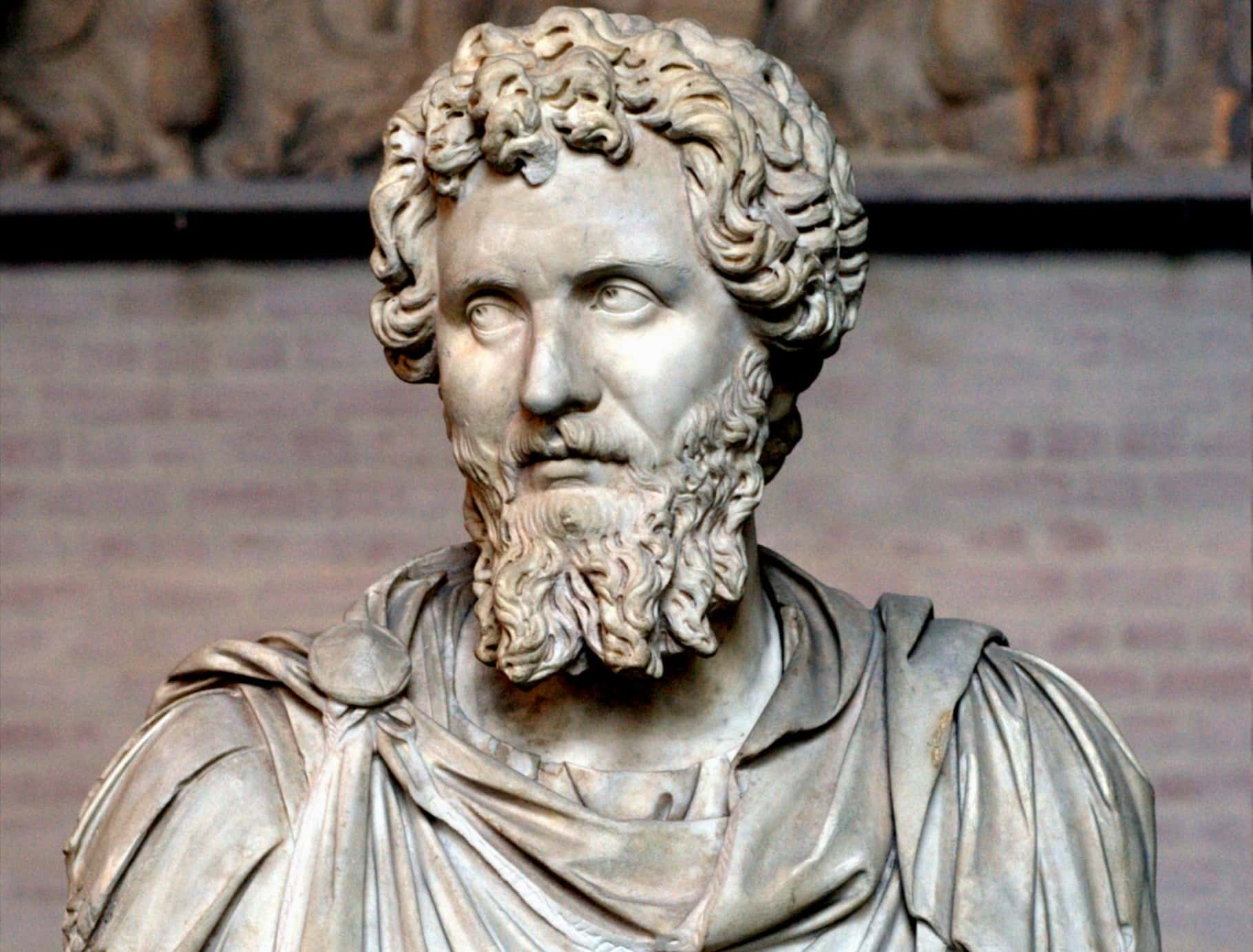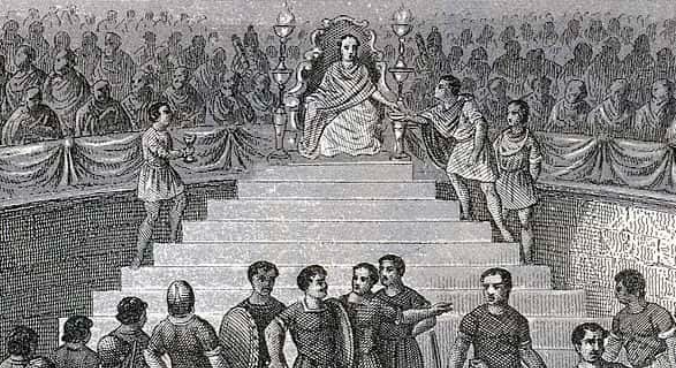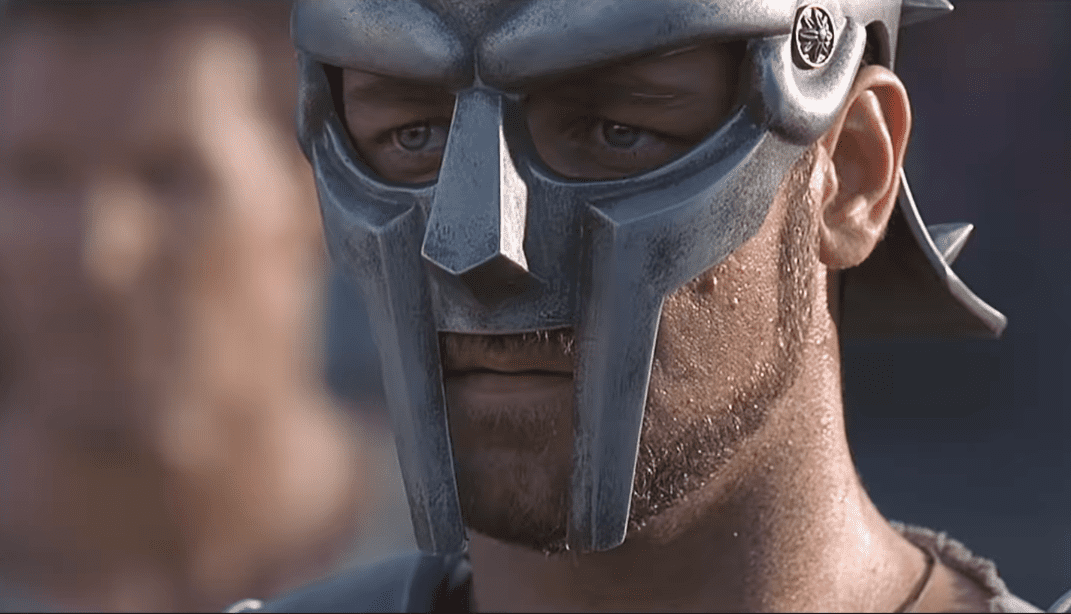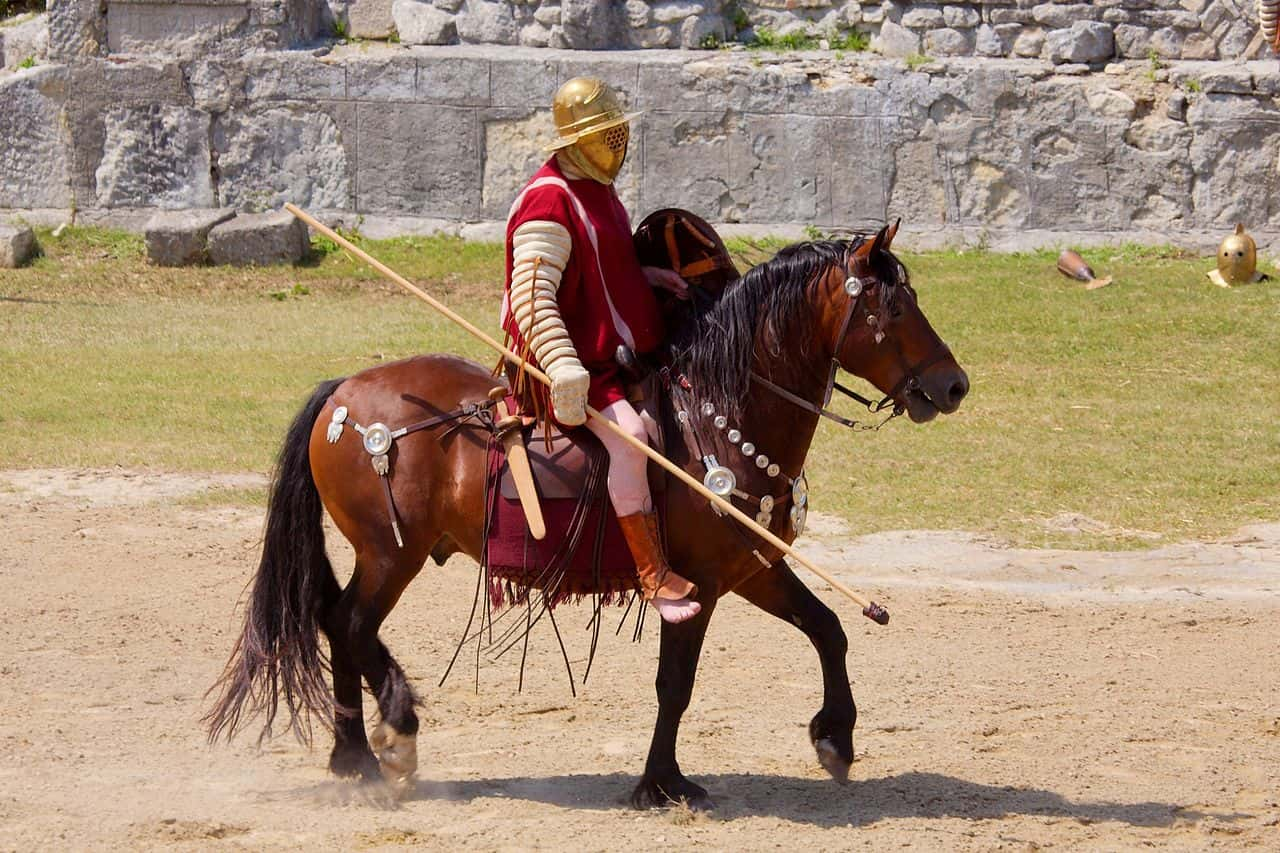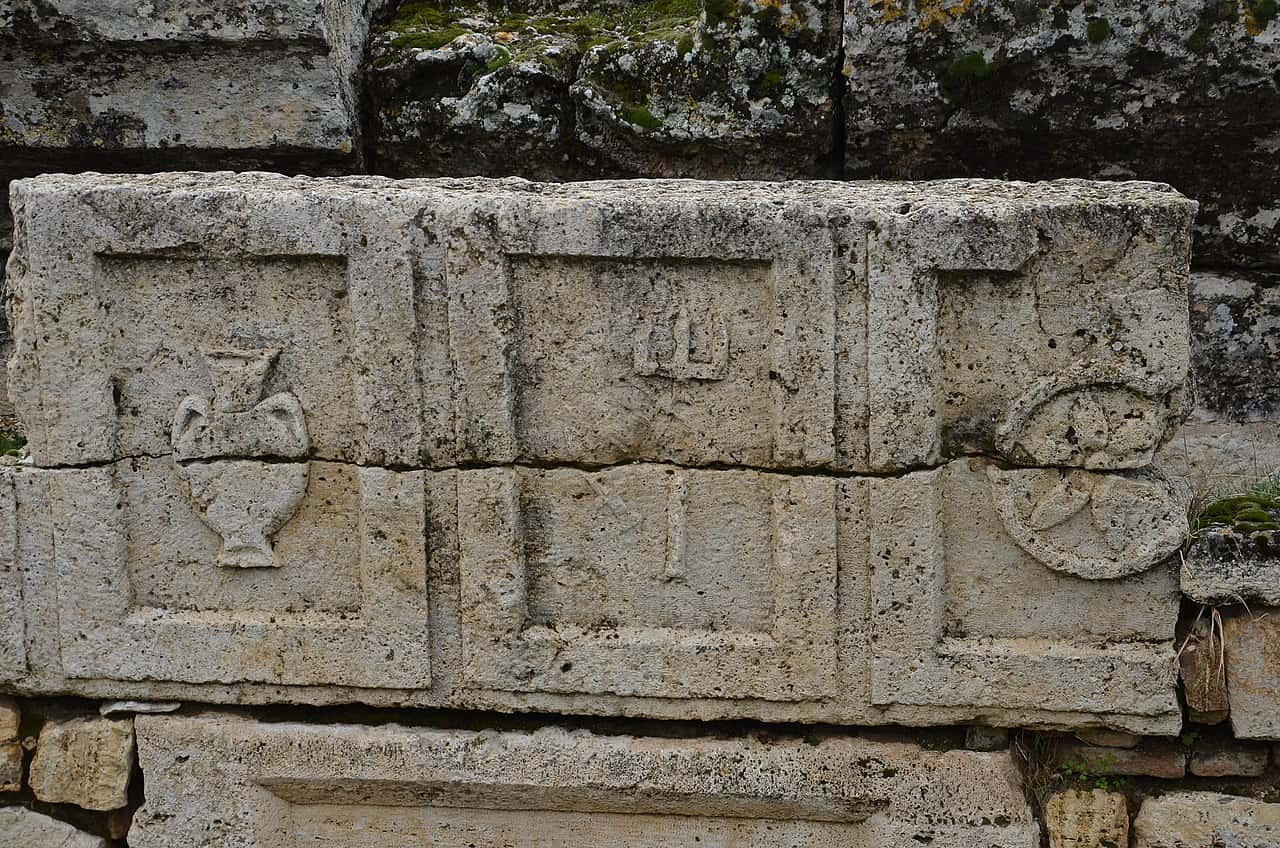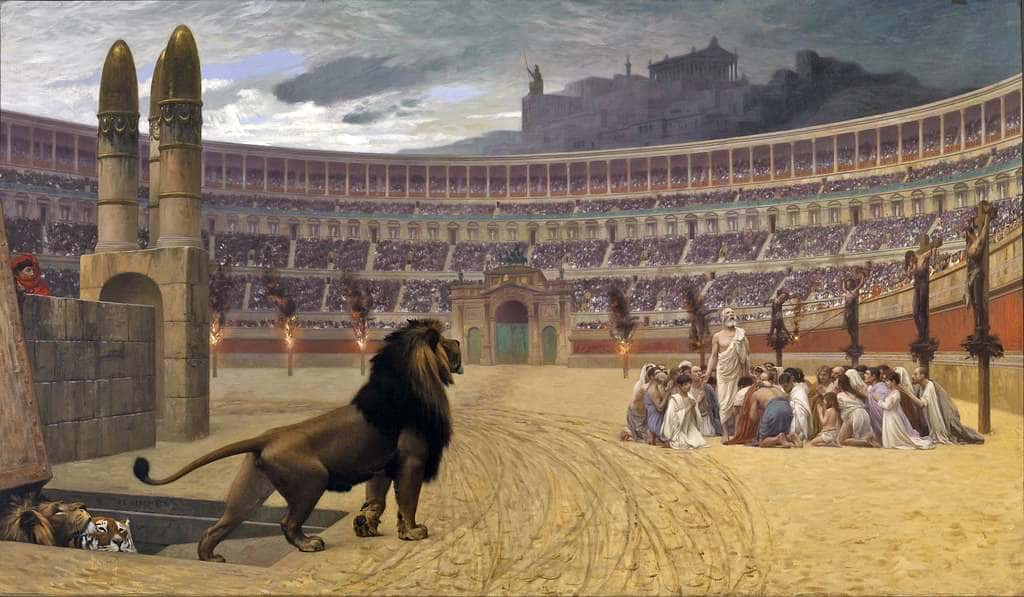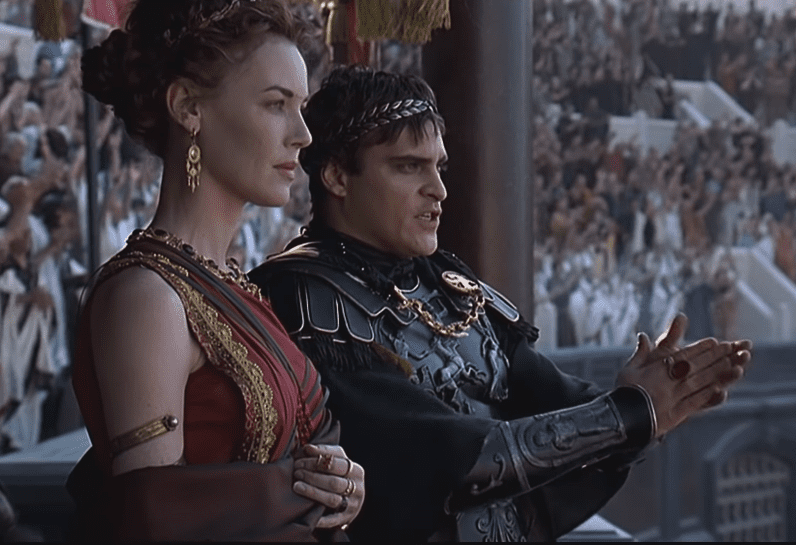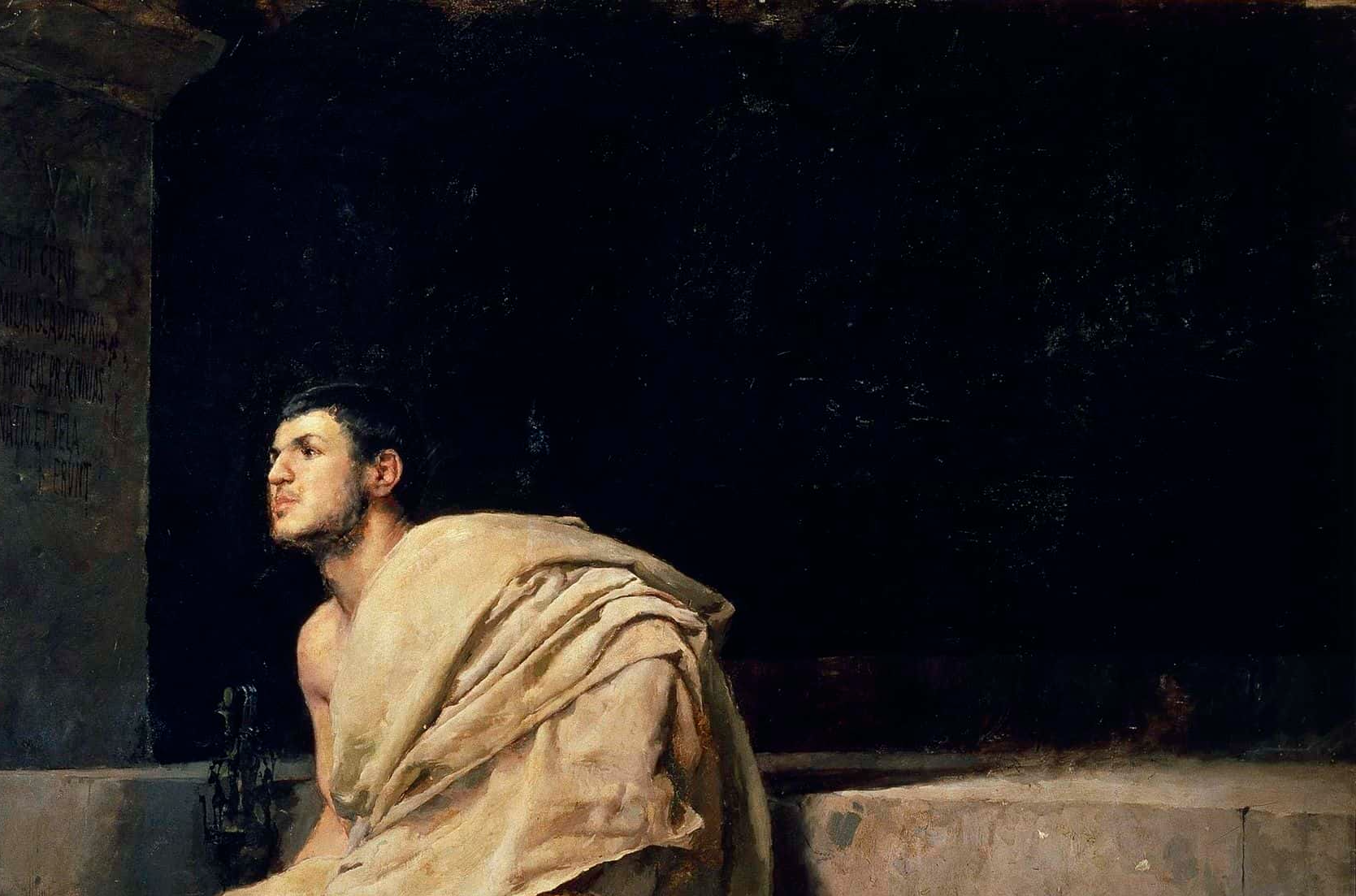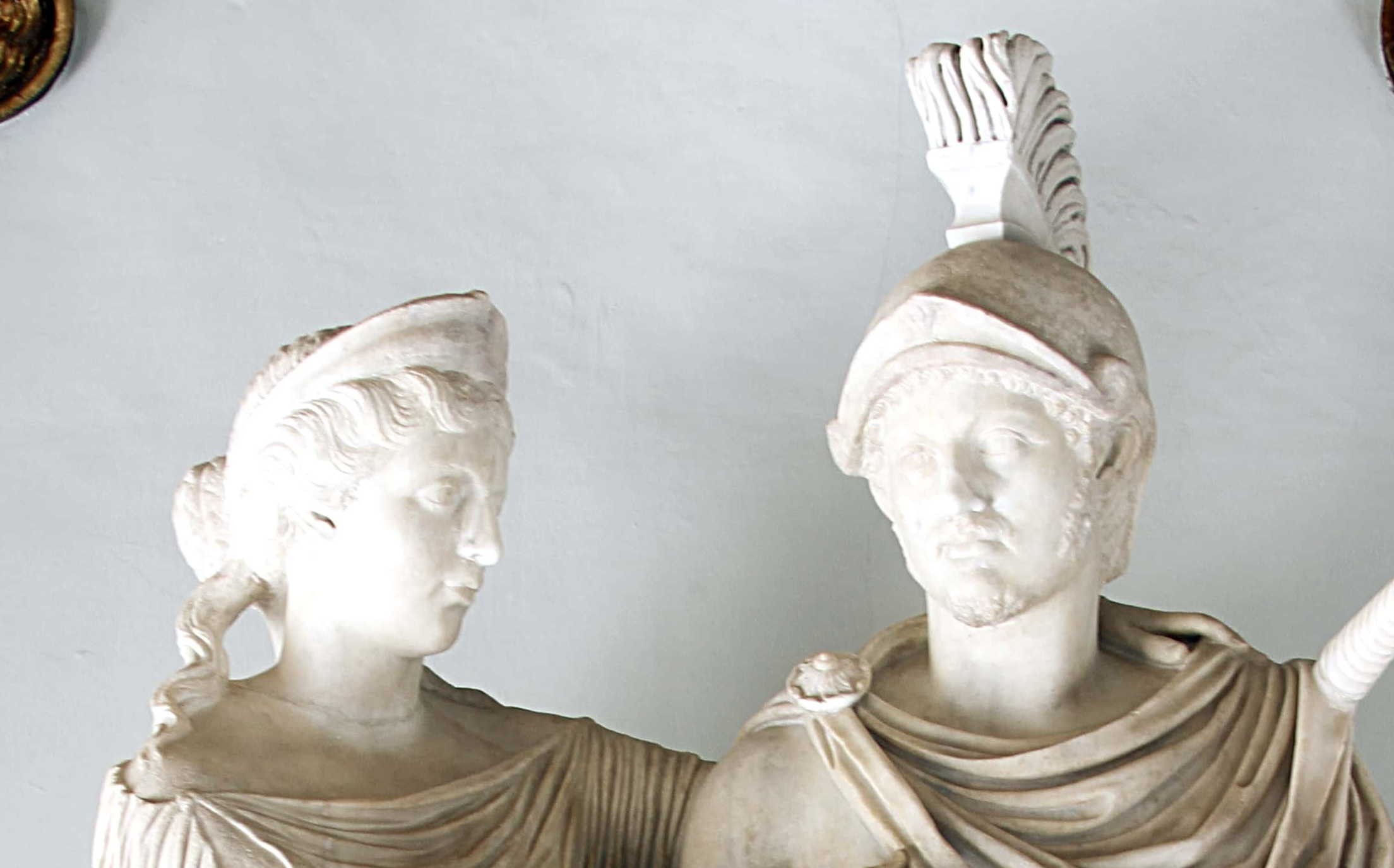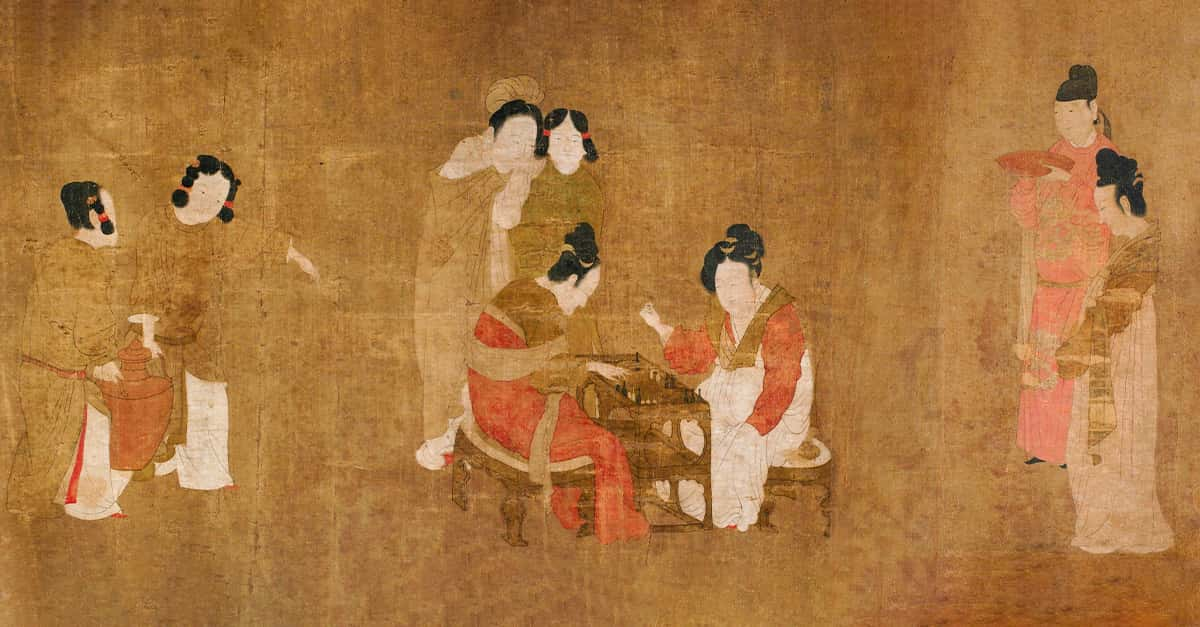Loved by the masses (and often scorned by the elites), Roman gladiators fought on the sands of the Colosseum and smaller venues across the Roman Empire. For more than 650 years, people flocked to arenas to watch these deadly warriors engage in a blood-soaked sport. Here are 43 things you may not know about Roman gladiators.
1. The Precursor
Before gladiators initiated fatal battles in the Colosseum, the upper class demanded that slaves reenact scenes from an individual's life during their post-life ceremonies. Given that a significant portion of Roman men were engaged in combat roles at some point, slaves were pushed into replicating battles, which could result in injury or even the ultimate sacrifice of their lives.
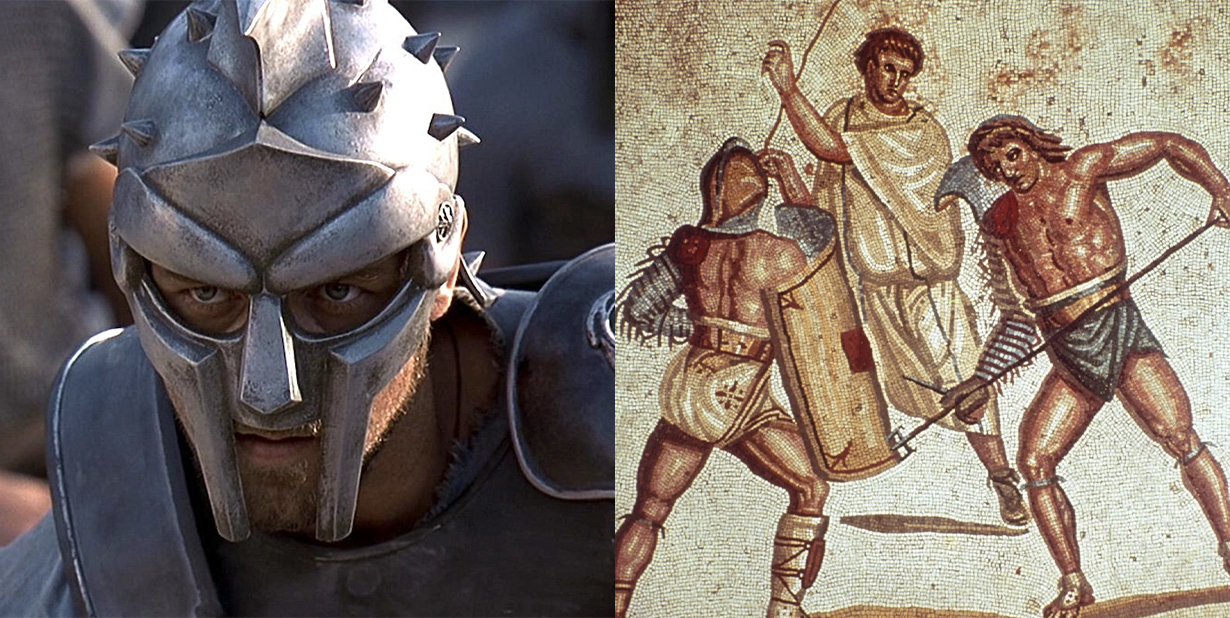
2. Bloody Romans
The Romans believed that spilling human blood would purify the soul of those no longer living. This is why it was so crucial to confirm slaves' demise during a funeral.
3. Massive Battle Reenactments
When Julius Caesar came into power, he took this idea of battle reenactments to a whole new level. When his father and daughter both departed this life, he ordered hundreds of gladiators to engage each other in combat until the end in their honor.
4. The Crowd Goes Wild
After Caesar put on this massive show, it was all anyone could talk about. Roman citizens loved it, and wanted more. From then on, government officials saw it as a way to win over the hearts of the people, and continued to force gladiators to fight.
5. A Prisoner’s Fate
In the beginning, all gladiators were slaves and captives from nations that Rome had dominated.
6. The Rudis
Whenever a gladiator won a battle, they got some prize money. If he was able to win enough battles, he could buy back his freedom and return to his home land. On the day he was allowed to be set free, he was given a small wooden sword called a “rudis".
7. Flamma
A gladiator who went by the name of Flamma was probably the most successful fighter. He was a captive from Syria, having been involved in 34 confrontations, an impressive number far above the average survival tenure of a gladiator. He was even offered the rudis for his freedom multiple times, but he actually enjoyed the glory of fighting and chose to stay. After a long career as a gladiator, his life ended at 30 years old.
8. The Barracks
Next to the Colosseum, there was a training barracks where gladiators lived and trained together. If they were captives or enslaved, they were confined in cells. An archeological dig of the barracks showed several skeletons of adults, and a baby. Since some gladiators were allowed to marry, it is possible that some of them raised families in the barracks.
9. Stylized Fighting
Most of the Gladiators had fought in battle before, so they did not necessarily need to be taught how to fight. Similar to modern-day WWE wrestling, they were taught how to make a fight entertaining to the audience. They learned to use wide, open movements and put on a show.

History's most fascinating stories and darkest secrets, delivered to your inbox daily.
10. Carb Up
It's easy to presume that prisoners in ancient times might have been close to perishing from starvation, however, reality surprisingly differs. Gladiators were given a lot of high-energy foods to make sure they were well fed and ready to battle.
11. Gladiators Were Expensive
It cost a lot of money to buy a slave, and it was even more expensive to provide food and housing for a gladiator. So, promoters genuinely did not wish for their fighters to perish immediately, even if the audience was thrilled by the bloodshed. The longer a gladiator stayed alive, the more money a promoter would make.
12. Costumes and Props
Blacksmiths created a variety of different helmets for the Gladiators to wear. This gave fighter a signature style, and made it easier for people in the audience to identify their favorite fighters. It was meant to give the illusion that the Roman Empire was capturing even more territories than they actually were, if people believed each style of helmet and armor was from another country.
13. Arms
In the beginning, gladiators only used swords and shields. As time progressed, they started to utilize spears, along with uniquely designed equipment such as tridents and fishing nets that synced with their designated roles.
14. Fighting Was in Fashion
After several years of watching slaves and prisoners fight as gladiators, many upper class Roman men began to grow jealous, wanting to battle, too. This lead to many upper class men donning armor and fighting in the colosseum.
15. Rules and Regulations
Similar to the rules of modern wrestling, gladiators were categorized in different classes based on their height and weight. Having two warriors of similar ability made fights more fair, and the battles went on longer.
16. Referees
Like all competitive sporting events, gladiator battles had referees. They were especially important in battles involving the upper class, where warriors didn't necessarily need to lose their lives. If a gladiator became seriously injured, the referee had the power to stop the fight.
17. Stalemate
Contrary to popular belief, gladiators did not always have to engage in battles that ended in their demise. There were times when two warrior were equally matched, and the battle would become long and drawn out. That was considered to be boring for the crowd. So, if no one was dying, the referee could stop the match and declare that it was a tie.
18. Priscus and Verus
These two men were rival gladiators. During one of their most intense battles, they were an equal match to one another. They put aside their arms and agreed on a draw. The crowd went wild, and both fighters won their freedom at the same time.
19. Only the virtuous depart early.
Most gladiators, whether they were forced into the fight or chose it of their own free will, did not live beyond their 20’s. Just because they don't always engage in lethal combat doesn't imply that being a gladiator was secure!
20. The Thumb Myth
In the 2000 movie Gladiator, the Emperor's thumbs-down gesture signified his wish for the defeat of the fight's loser. However, this is not historically accurate. There are images of people giving fighters the thumbs-down, but there is never any written explanation as to why everyone was doing it. Historians just made the assumption on their own.
21. Female Gladiators
Something you never see in the movies is the fact that women were gladiators, too. At first, it was considered sort of a joke, and they usually fought dwarves or animals. Eventually, two female fighters proved they were ready for a real battle. Records show that “Achilla” and “Amazon” fought against one another and came to a draw.
22. Without a shirt
Similar to the male gladiators, the females were also required to not wear any clothing on the upper part of their bodies. They wore loincloths to cover the bottom half of their bodies, and used a helmet and shield. The crowd could only see the woman’s face in the end, when she pulled her helmet off. It is believed that that segment of the show was intended to be sensual rather than a serious battle.
23. The Ban
In 200 AD, Emperor Septimus Severus decided to ban women from being gladiators.
24. Categories
Gladiators were categorized differently based on their type of armor, skill set, and social class, as well as the combat tools they used.
25. Celebrity
Certain gladiators gained popularity among fans. Just like any celebrity, many of these ultra-fit men and women were idolized as symbols of attractiveness in Roman society. Children even played with dolls made to look like popular gladiators. Roman women actually wore gladiator sweat as perfume.
26. Freelance Warriors
The winners of gladiator battles would win prize money. After a while, free Roman men who needed to earn an income decided to sign a contract to join a training skill and become a gladiator. These were generally individuals previously engaged in defense services who couldn't find employment, or those aiming for recognition and glory.
27. Gladiator Unions
Just like many other jobs, gladiators actually formed unions, called collegia. If a gladiator met his end, the collegia ensured he received a proper burial. If he had a wife and child, they would put some money together to make sure the family was taken care of.
28. Spartacus
The most renowned gladiator was Spartacus. He was a captive from Thrace, seized by the Romans. Rather than accepting his fate, he convinced 70 other gladiators to rise up and escape. The set even more slaves free and hid in the mountains. The Spartacus rebellion for about a year before the Romans tracked them down and crucified thousands of people who had chosen Spartacus as a new leader.
29. Crixus
As Spartacus’ right-hand-man, Crixus was able to get his freedom from being a gladiator. He chose to branch off with his own group and attempted to conquer Southern Italy. However, the Romans hunted him down as well.
 Spartacus: Blood and Sand,Starz
Spartacus: Blood and Sand,Starz
30. The Beast Hunters
In every movie about gladiators, there is always a scene that includes a fight with a vicious animal. Usually, only the “beastiarii” and “venatores” category of fighters fought animals. Due to the challenges of capturing, storing, and importing various animals from overseas, it was indeed difficult to maintain a substantial stock for the gladiators to confront. Therefore, it necessitated extensive prior planning. However, Christians were being punished by the Roman Empire, so there were times when they would put them in the ring with hungry rabid dogs.
31. Suicides
When a prisoner was being thrown to dogs or lions, they were typically only given a dagger to defend themselves. Instead of enduring the pain of being ripped apart by a wild beast, many opted to take their own lives with the sharp blade prior to the start of the battle.
32. The Elephant Battle
Sometimes, Roman emperors would use animals as a means to make the show more extreme and entertaining for the audience. In one battle, 20 elephants were pitted against several men.
33. Animals Strike Back
According to the renowned philosopher Cicero, one lion was able to defeat 200 men before a gladiator finally subdued it. In another story, a herd of elephants ran into the crowd, trampling the audience rather than the prisoners.
34. Overkill
Within the first 100 days following its inauguration, the newly constructed Roman Colosseum witnessed the demise of 9,000 diverse exotic animals. This included elephants, crocodiles, ostriches, bears, tigers, bulls, giraffes, hippos, rhinos, and lions. During another festival, an additional 11,000 animals were culled. This significant reduction in animal populations ultimately led to the disappearance of these species in the Mediterranean area.
35. One of the Guys
Some of the Emperors would actually participate in gladiator battles, in order to get people to like them. Usually, they would battle animals on top of elevated platforms. In this manner, they were comparatively secure, and effortlessly able to neutralize the defenseless creatures prior to returning to their seats to relish the rest of the show.
36. Commodus
There was one Emperor who enjoyed participating in the gladiator games a little too much. Commodus would show up to the Colosseum whenever he wanted, a challenge men to battle. He never seemed to be interested in the theatrical aspect of the gladiator fights, and would immediately aim for a decisive victory. There were even moments when he pulled in impaired individuals from the street with the intention to end their lives in full view of a crowd. Clearly, this man was a ruthless killer, and thankfully, he met his demise in 192 AD.
37. Keep The Ladies Away
Perhaps the male spectators were apprehensive that their wives might relish the display of partially uncovered, physically fit men slightly more than necessary. Women were only allowed to sit in the very back row. This meant that they could not see the finer details of the gladiator’s six-pack abs. It is said that there was an anxiety that women would cheat on their husbands if they got too close. However, it was perfectly acceptable for men to watch the female gladiators, who weren't wearing any upper garments, in the front row.
38. Prostitution Side-Hustles
While historical records cannot confirm if gladiators truly engaged in the profession of personal companionship on the sidelines or not, such an activity would have likely been kept under wraps. However, one clue may answer the debate. The Roman word “lanista,” which was the name of the trainers who taught the gladiators how to fight, was also used as slang for the word meaning “pimp". Numerous gladiators were previously in positions of armed service during their teens and 20's and were not given the chance to socialize. They were also desperate for money to stay alive, buy their freedom, and go home.
39. Can’t We All Just Get Along?
The very first person of note to object to the gladiator games was a man named Telemachus. He was a Christian monk from Egypt, advocating to people that all of the conflicts and the bloodshed needed to be halted. He encouraged people to bring Jesus into their hearts. The public reacted by pelting him with stones until he no longer lived.
40. Natural Disaster
Over the years, the Colosseum had a lot of issue with Mother Nature. It was hit by lightning, caught on fire, and even went through two different earthquakes. This destroyed parts of the stadium. People continued to go to the games, but as it became more damaged, it became a less appealing place to hang out to watch a fight.
41. Financial Troubles
At one point in time, the gladiator battles were running the Roman economy. Common people used their money to buy tickets, and wealthy patrons paid for their favorite warriors. As the economy began to suffer, so did the games. Ultimately, the economy deteriorated to such a point that individuals started to seize anything composed of gold or metals to scrap it for money.
42. Affairs
Empress Faustina, the wife of Emperor Marcus Aurelius, had such vivid fantasies about a Roman gladiator that she actually suffered physiological pain and insomnia. Several historians have reported that she carried on an affair with this gladiator and several others, potentially leading to the conception of Commodus.
She eventually confessed her passions to her husband, and Marcus sought the council of his soothsayers. On their advice, Marcus ordered the gladiator executed and demanded that Faustina bathe in his blood before she lay with Marcus.
43. Christian Shut-Down
When Emperor Constantine decided that Christianity would be the official religion of Rome, that officially ended the gladiator games. At first, people were disappointed, but once they learned to have compassion through Christian teachings, they began to actually feel guilty about the barbaric practice. Over time, people stopped missing it.


